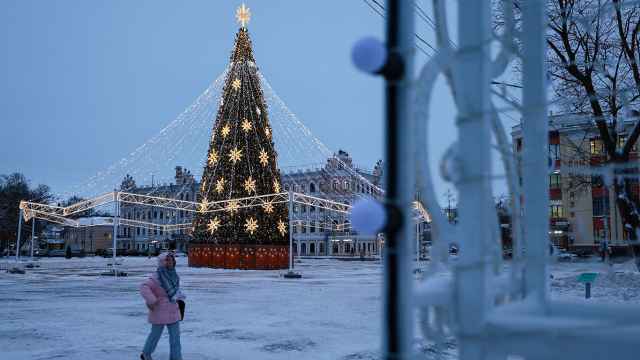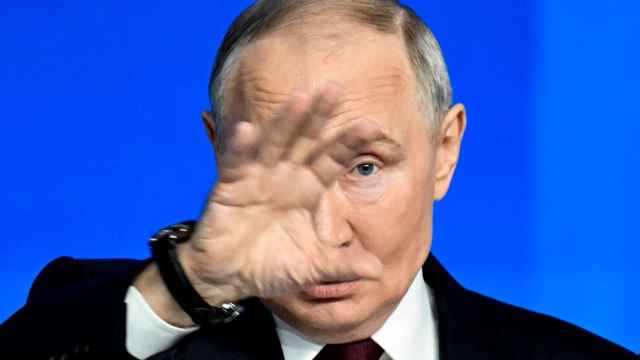A comparison of economic performance among countries can be useful to focus on a few key issues. International institutions such as the International Monetary Fund, in its semiannual World Economic Outlook, have developed such comparisons into an art form. Stacking countries up against one another obviously cannot be taken too literally because countries are as different as their regions and peoples.
In this column last month, I compared Russia’s per capita economic growth relative to that of Portugal over the past decade as then-Prime Minister Vladimir Putin had speculated on the eve of the millennium. The conclusion was that by 2015, as he predicted, Russia should easily be able to catch up with where Portugal stood in 2000 but will still lag well behind that country’s current lackluster performance, much less the rest of Europe.
Of course, there is nothing inevitable about such projections. They are simply a mental exercise. However, in the case of Russia, such comparisons provide insights precisely because of its unique history and geography, among other features.
I recently came across an unexpected piece of comparative analysis by a former IMF colleague, Jonathan Anderson. It brought home how Russia’s uniqueness is exhibited in a significant way when contrasted with other countries.
His analysis sought to address the question of why Russia experienced such a sharp decline in real gross domestic product in 2009, since it was much steeper than elsewhere. And it led me to wonder whether Russia, more than most middle-income countries, was particularly or even uniquely vulnerable to external financial shocks. Needless to say such a conclusion would have sobering implications for the future in view of the unusual degree of uncertainty about the direction of the global economy.
In 2009, the State Statistics Service reported that Russia recorded a massive 7.8 percent plunge in real GDP, the brunt of which came in the first quarter. On current trends it will only be around mid-2011 that Russia’s GDP will fully recover. This outcome was far worse than exhibited elsewhere, even among very similar countries. This is where Anderson’s international comparison became so interesting.
The unlikely comparison was between Russia and Nigeria. As he observed, in terms of some major economic parameters such as dependence on oil exports, debt leverage and credit conditions, currency trends, interest rate structures, foreign exchange reserves and flows, both Russia and Nigeria looked uncannily identical in terms of the nature and magnitude of the 2008 financial crisis shock. And so the normal expectation would be that these two countries would perform roughly the same in the post-crisis environment as well.
In fact, Russia’s trajectory in the aftermath of the crisis was radically different from Nigeria and most others. It is interesting to understand why.
Of course, some might contend that, a few financial variables aside, such a comparison is misleading. After all, Russia is a relatively industrialized economy with purportedly strong financial and credit linkages throughout the system, while Nigeria is far poorer on a per-capita basis with a sizable share of GDP still tied to rudimentary agriculture; so of course Russia should be much more sensitive in the aggregate to financial shocks.
But this facile argument falls down on three fronts. First, even if we just focus on the industrial economy, Russia did worse than Nigeria, with a much sharper like-for-like decline in nonagricultural manufacturing and mining output. Second, it’s not at all clear that Russia is more financially integrated. Both economies came into the crisis with a domestic credit-GDP ratio of about 50 percent with similarly leveraged banking systems. Third and by far most important, if we just focus on what happened within the financial system itself, we find that it is precisely here where the key differences in performance actually lie.
Russia’s government bond yields rose dramatically at the end of 2008, a sign that it was more than just a problem of interbank liquidity. Rather, there were absolute liquidity shortages in the economy as a whole. In Nigeria, just the opposite occurred. Treasury bill rates declined as money was withdrawn from banks but stayed in the country. In other words, Nigeria suffered a bout of banking system panic, while Russia suffered a wholesale exit from the economy.
In fact, there was a fairly dramatic decline in ruble-denominated broad money M2, and this in turn meant that the Central Bank was not able to provide widespread liquidity support for banks in the heat of the crisis. So the question is what was it in Russia that pushed local depositors to exit the currency in such large amounts — and almost uniquely so in the emerging world?
A large part of the answer is because they could. Russia stands virtually alone among low- and middle-income countries in the sheer openness of its external capital account. Since 2006 the ruble is an entirely convertible currency, unlike in China, India or Brazil, much less Nigeria. There are sound political and economic reasons that the Russian currency has been made so readily convertible. A 20th-century history of absolute exchange controls, monetary confiscation and the almost hyperinflation and crisis in the 1990s convinced the authorities that even a hint of a return to the bad old ways of the past would set off a flight from the ruble. This is arguably what allowed global liquidity concerns to translate into a uniquely domestic shock.
The good news was that it was a profoundly temporary shock, lasting only a few months. Russia’s underlying balance sheet is no worse than in other oil-
exporting countries that have fared far better than Russia in terms of growth, and this points the way to a sustained period of recovery ahead, especially with oil prices so high that the government can start to replenish its stabilization funds.
If correct, the implications of this comparison are troubling. Russia is uniquely hobbled in buttressing itself against the seemingly inevitable volatility of the global economy. Russia, conditioned by the unique social experiment that covered most of the 20th century, is caught between the Scylla of a historically mandated global openness unknown outside of advanced economies and the Charybdis of external shocks that occasionally provoke panic on the part of domestic depositors and foreign investors.
Martin Gilman, former senior representative of the International Monetary Fund in Russia, is a professor at the Higher School of Economic.
A Message from The Moscow Times:
Dear readers,
We are facing unprecedented challenges. Russia's Prosecutor General's Office has designated The Moscow Times as an "undesirable" organization, criminalizing our work and putting our staff at risk of prosecution. This follows our earlier unjust labeling as a "foreign agent."
These actions are direct attempts to silence independent journalism in Russia. The authorities claim our work "discredits the decisions of the Russian leadership." We see things differently: we strive to provide accurate, unbiased reporting on Russia.
We, the journalists of The Moscow Times, refuse to be silenced. But to continue our work, we need your help.
Your support, no matter how small, makes a world of difference. If you can, please support us monthly starting from just $2. It's quick to set up, and every contribution makes a significant impact.
By supporting The Moscow Times, you're defending open, independent journalism in the face of repression. Thank you for standing with us.
Remind me later.





